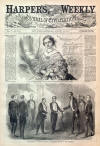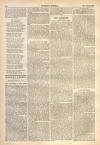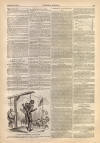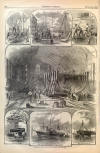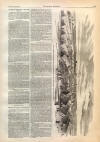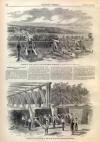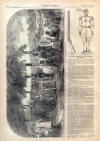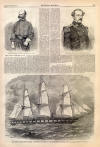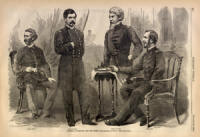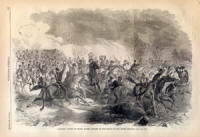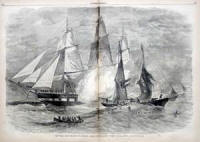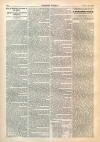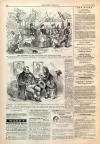|
This Site:
Civil War
Civil War Overview
Civil War 1861
Civil War 1862
Civil War 1863
Civil War 1864
Civil War 1865
Civil War Battles
Confederate Generals
Union Generals
Confederate History
Robert E. Lee
Civil War Medicine
Lincoln Assassination
Slavery
Site Search
Civil War Links
Civil War Art
Revolutionary War
Mexican War
Republic of Texas
Indians
Winslow Homer
Thomas Nast
Mathew Brady
Western Art
Civil War Gifts
Robert E. Lee Portrait
|
GENERAL McCLELLAN AND HIS
STAFF.
ON
page 532
we publish a large picture of
GENERAL M'CLELLAN AND HIS STAFF, from a group
by Brady. Of General M'Clellan himself, on whom such hopes now rest, we gave a
biographical sketch, with a portrait, two or three weeks since; we now borrow
from the Herald the following memoranda of the three officers who constitute his
personal staff.
MAJOR BARRY.
MAJOR WILLIAM FARQUHAR BARRY,
chief of artillery, is a native of the city of New York, and is at present about
forty years of age. He entered as a cadet at West Point in September, 1834, and
graduated with honors in 1838. On the 1st of July of the same year he was
breveted Second Lieutenant in the Fourth Artillery, transferred to the Second
Artillery, and in the same year and month appointed Assistant Commissary of
Subsistence. In August, 1842, he was appointed First Lieutenant, and Captain in
July, 1852.
At the breaking out of the
Mexican war Major Barry was First Lieutenant, and attached to the famous
Ringgold battery, doing such effective service in that campaign. When it was
found that more recruits for the artillery were needed, Lieutenant Barry was at
once sent to this city to recruit, and this officer being so strict in his views
as regards discipline and qualification, he only accepted a ratio of about five
per cent. of those who offered, while the regular infantry service accepted
forty per cent. Thus Lieutenant Barry missed nearly one half of the war. When he
returned to Mexico,
General Worth, of New York, appointed Lieutenant Barry on
his staff, which position he held until our victorious army returned to the
United States.
After the war Lieutenant Barry
was stationed at different posts, Fort Hamilton among the rest, where he
received his commission as captain. When the troubles in Kansas broke out he was
at once sent to Fort Leavenworth, where he placed himself under the command of
General Harney, and remained there for several years.
On the evacuation of
Fort Sumter more and efficient artillery was
needed at
Fort Pickens, and the most reliable man the
government could select was Captain Barry, who was instantly dispatched to that
post, until it was reinforced by the energy of Colonel E. D. Keyes. On the 5th
of July Barry and his battery left Fort Pickens in the steamer Cahawba; arrived
at New York on Sunday, the 14th ; left that same evening by special train to
Washington; made a requisition for extra horses while there, and joined the
grand army of
General McDowell on Wednesday, the 17th, at
five o'clock P. M., about two hours after our troops had taken possession of
Fairfax Court House and Fairfax Junction. Major Barry was assigned to the Fifth
Division, commanded by Colonel Dixon S. Miles, and proceeding in that column to
Centreville.
Major Barry was appointed on the
staff of General McDowell, and acted as chief of artillery during the encampment
at and about Centreville and on the day of the battle. His battery, in the mean
time, was in command of Captain J. C. Tidball, kept as a reserve, with Colonel
Miles's column, between Centreville and the extreme left, where Hunt's and
Green's batteries were playing on the enemy to prevent General McDowell's troops
from being attacked in the rear.
CAPTAIN STEWART VAN VLIET,
ASSISTANT QUARTER-MASTER-GENERAL.
CAPTAIN VAN VLIET is a native of
New York, and about forty-two years of age. He entered the West Point Academy as
cadet in 1836, graduated 1840, and was breveted Second Lieutenant in the Third
Artillery, July 1, 1840. In November, 1843, he was promoted to a First
Lieutenancy, and acted as Professor of Mathematics at the Military Academy until
November, 1847. In February, 1847, he was appointed Regimental Quarter-master,
and subsequently Assistant Quarter-master. June 4, 1847, Lieutenant Van Vliet
was promoted to a Captaincy, but still acting as Quarter-master. Under the
administration of President Buchanan, during the disturbances at Utah, Captain
Van Vliet was sent as a special commissioner. There being no regular
conveyances, the Captain was compelled to ride on horseback all the way, alone
and unattended. He accomplished his journey to Great Salt Lake City in an
uncommon short time, and his famous ride was the subject of comment with every
body. In President Buchanan's message to Congress on the subject which took
Captain Van Vliet to the Mormon territory, the Commissioner was honorably
mentioned as " Major Van Vliet."
On his return from Utah he was
appointed Assistant Quarter-master-General at Leavenworth, which position he
held until called upon by
General McClellan to act in the same capacity
on his own staff. From the previous career of Captain Van Vliet the brightest
anticipations of the future may be made ; and it is safe to assert that the
Quarter-master's Department could hardly have been intrusted in better hands,
and speaks volumes for the wise selection of the popular young commander of the
Department of Virginia.
CAPTAIN HENRY FRANCIS CLARK,
ASSISTANT COMMISSARY GENERAL.
CAPTAIN CLARK was born in the old
Keystone State, about the year 1820, and is at present in the neighborhood of
forty years of age. He entered at West Point, from Pennsylvania, in 1839,
graduated in 1842, was breveted Second Lieutenant in 1843, and ordered in active
service to the Second Artillery. Captain Clark went through the entire Mexican
campaign, and in the official dispatches he was particularly mentioned as having
greatly distinguished himself in the battle of Monterey, with Duncan's battery
in the
battle of Churubusco, and was wounded at the battle of El Moline. In
September, 1847, he was promoted to First Lieutenant, and on the 13th of
September he received the brevet of Captain " for gallant and meritorious
conduct in the
battle of Chapultepec." In July, 1848, Captain Clark was
appointed Assistant Instructor of artillery and cavalry in the Military Academy
at West Point, which position he held for a long time afterward.
THE NAVY-YARD AT BROOKLYN.
WE devote
page 534 to
illustrations of the
Navy-yard at Brooklyn, which is at present a scene of remarkable
activity. The Evening Post thus describes the work that is going on :
Nearly twenty-five hundred men
are now employed at the Brooklyn Navy-yard, and the number is constantly
increasing. At the present rate three thousand men will soon be engaged there; a
greater number, perhaps, than were ever before employed within its walls. One
year ago the number was less than one thousand. It will be seen, therefore, that
the necessities of a state of war have given employment, in this department
alone, to many hundreds —probably soon to be extended to thousands—of mechanics,
who would otherwise be out of work and their families suffering.
There is on every hand the
greatest activity. The whole force of the yard is not engaged in the work of
fitting out vessels. On the contrary, but few war ships are at present in the
hands of the workmen. Two only are building, the Oneida and Adirondack, of which
the keels are scarcely laid. The former will be of about 1300 tons, and the
latter somewhat larger, rating with the sloop-of-war Brooklyn. Four or five
vessels in all are fitting out, and the work upon them is pushed with the
greatest rapidity.
A vast amount of work seems to
have been laid out and to be in progress in the different departments which
manufacture supplies for the navy. Much forging and blacksmith, tinwork, and
coopering is going on. Quantities of ordinary ship's stores are constantly
accumulating to supply the extraordinary demands of the present and future; the
vast military stores which lie about in every direction are preparing for use,
and workmen are engaged in brushing up and fitting with sights the great cannon
which are ranged in rows along the main avenue of the yard. The scene is one of
the most curious as well as the busiest which has ever been witnessed in that
locality.
The steam sloop of war Richmond,
which arrived from the Mediterranean on the 3d of July, has been refitted, and
is nearly ready to join the blockading squadron. A portion of her armament,
which is very heavy—consisting of sixteen 9-inch
Dahlgren guns, carrying shot,
shell, or canister—has been put on board. It is possible that two other guns of
a different class and one or two rifled pieces will be added. The vessel is
pierced for twenty-eight guns, but could not carry so great a number. She is a
first-class vessel of nearly 2000 tons, and will be a valuable addition to our
blockading service. It is intended to get her off to-morrow, but probably she
will not be ready. Her complement of men is 350, and she will have an extra
number of marines on going again into commission. Her officers are : Captain,
John Pope ; Lieutenants, N. C. Bryant, A. B. Cummings, Albert Boyd, Jun.;
Master, Edward Terry; Paymaster, George F. Cutler; Surgeon, A. Henderson ; Chief
Engineer, John W. Moore.
The gun-boat Harriet Lane is also
refitting at the yard, and will be ready to sail in a day or two. Her armament
is on board.
The Connecticut (steamship) will
have her armament and be ready to sail in a few days. She will be armed with
four heavy 32-pounders and one rifled 18-pounder. The last will be placed on the
forecastle-deck. She is 1900 tons burden, with very heavy steam power, and will
be employed in the transport service in connection with our blockading fleet,
making trips monthly. She is to be the consort of the Rhode Island, which
recently sailed.
The Potomac, a sailing vessel
carrying fifty guns, is also fitting out, and will be ready in ten days.
In about a month four coaling
vessels will be prepared to enter upon their work in supplying our squadron. The
vessels have been procured, but it is understood that the refitting has not been
commenced.
The Iroquois, which has been in
search of the privateer Jeff Davis, sailed from the Navy-yard yesterday.
Several United States vessels are
in the stream, among them the Vixen, Varina, and Crawford.
Several of these vessels have
gone to sea since the above was written.
THE BATTLE OF DUG SPRINGS.
ON
page 533 will be found an
illustration of the BRILLIANT CHARGE OF THE UNITED STATES CAVALRY ATTACHED TO
GENERAL LYON'S ARMY upon an enormous force of rebel infantry, at the
BATTLE OF
DUG SPRINGS, on 1st August. The dispatch from
Springfield, Missouri, dated
August 2, says :
On Thursday news reached here
that the enemy were advancing on us, in three columns, with a force numbering
20,000 men. General Lyon immediately set out to meet them with the Second and
Third Missouri regiments from this city, the First and Second Kansas regiments,
and the First Iowa regiment ; also with two or three companies of regular
infantry and two or three companies of regular cavalry from Camp M'Clellan.
About twelve miles west of here General Lyon encamped that evening, on Tyrel
Creek, and on Friday advanced to Dug Springs, about nineteen miles southwest of
Springfield, where he obtained intelligence of the enemy.
A fight took place between four
and six o'clock that afternoon. A party of two hundred and seventy of
General
Lyon's cavalry, as previously reported, were crossing a ridge of high land,
partially inclosed on the east by a valley, and, when descending the hill, came
upon a large force of the enemy's infantry, variously estimated at from two
thousand to four thousand, and being unable to retreat, they charged and cut
their way through with the loss of only five men. The lieutenant commanding the
cavalry was killed, after killing eight of the rebels. Meantime the enemy
appeared in large numbers moving along the valley, but they were put to flight
by our artillery. Our infantry was not engaged. The rebels retreated southward,
to a place called M'Cullough's Store, on the Fayetteville Road.
The number of rebels found dead
on the field amounted to forty, and some forty-four wounded were picked up.
The correspondent of the Herald
thus describes the affair :
About nine in the morning, after
a march of seven miles, a picket guard of some fifty mounted men was seen, and a
shell was thrown among them as a gentle reminder that the Union troops were
around. They at once made good time toward the main body, some two miles ahead.
Near a place called Dug Spring, about nineteen miles from Springfield, our
advanced pickets met those of the enemy and exchanged a few shots. Our cavalry
formed in line at the right of the road, and Captain Steele, with two companies
of infantry, took the left. Captain Plummer, with three companies of First
Infantry, supported by Captain Tatten's battery, held the centre. The enemy was
posted in a wood crowning a gentle slope, and covering it to the foot, where the
road for half a mile ran through a valley between low hills, or rather "swells"
of land, covered with a scanty growth of oak bushes, from one to five feet in
height, interspersed with a few small trees. As the rebels' position and numbers
were concealed by the wood, General Lyon did not deem it prudent to advance the
column within range, as a masked battery might at any moment open upon it with
considerable effect, while at the same time our strength would avail us nothing.
For upward of an hour nothing was
done save the exchanging of a few shots among the pickets, and at length General
Lyon gave the order for the column to fall back and encamp in the vicinity of
the spring. This movement was considered by the rebels to be a retreat, and as
soon as we were in motion their cavalry made its appearance from the wood and
passed to the front of a corn-field which covered their extreme left. Their
number was not far from four hundred, and they formed in a solid square
preparatory to charging. Just as they were on the point of rushing forward,
Captain Totten sent a twelve pound shell from his favorite howitzer ; but the
elevation was too great and the missile passed over its mark. A half minute
later another shell followed with better success, bursting directly in the
centre of the cavalry and emptying some twenty saddles. The whole body made a
retreat for the timber in " precipitous and tumultuous haste."
Captain Steele was still on the
left, and a body of nearly eight hundred infantry, with a few mounted men, came
forward from the enemy's right with the evident intention of engaging and
surrounding the Captain's two companies. Company C, of First cavalry, was in the
rear (lately front), near Captain Steele and Lieutenant M. J. Kelly, with twenty
men from this company, made a Balaklava charge right in the face of the bullets
and bayonets of the whole rebel infantry. Four of the twenty were killed and six
were wounded, but they succeeded in breaking the infantry and putting them to
flight. Four horses were wounded so badly that it was necessary to kill them—one
receiving nine, and another eleven rifle balls. One of the men—Sergeant
Sullivan—received three terrible, though not fatal, wounds. As he was falling
from his horse he waved his sabre, and shouted "Hurrah for the old
Stars and
Stripes!" When brought to camp he seemed to forget his wounds in his joy at
having struck a blow for the Union. One of the enemy's wounded inquired of
Lieutenant Kelly, with great earnestness,
"Are your cavalry men or devils!"
The lieutenant replied that it
was possible they might be a composition of both.
" Well," said the man, "we can't
stand such a charge as that. You can whip us all out if you've got a decent army
of such soldiers."
One of our wounded, a private
named Jacobs, who was captured by the rebels, was knocked from his horse while a
prisoner by a blow from a musket, and left for dead. He was found on the field
the next morning and carefully attended to. He will probably recover.
The enemy did not again appear
that day, and the command encamped and passed the night in quiet. The utmost
care was taken to prevent a surprise during the night by posting pickets in all
directions, and arranging the camp with special reference to a defense in the
darkness. Major Sturgis was particularly active at all hours, and if the enemy
had made an attack they would have met a warm reception.

|
